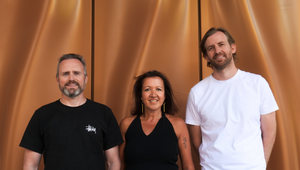
Life in Bullet Time: Getting to Know Bilibili’s Gen Z Users

Bilibili has become a platform that brands cannot ignore if they want to reach current and next generation consumers in the China market. But engaging users on this popular video-sharing platform is not as straightforward as marketers would like.

Going in with the standard practice of designing campaigns based on user behaviour data, personas and single-minded “insights”, will not help brands get the most out of connecting with the Bilibili community.
Fifty-eight percent of post-90s and post-00s in China visit Bilibili at least once a month. According to the 2021 Q3 Earnings Announcement of Bilibili, the monthly average number of interactions has exceeded 10 billion, an increase of 86% over the same period last year.
For users, it is a precious community space that hosts, shelters and inspires millions of minds every day. Or more precisely, minds that inspire each other and spark new thoughts constantly.
In our research report “The atypical marketing guide to Bilibili”, we’ve decoded the reasons that make both Bilibili and the Chinese Gen Z cohort special. Here are three of the 13 behaviours and traits we’ve identified that will give you a glimpse of this fascinating community.
Welcome to the neighbourhood
China’s Single Child Policy and its rapid urbanisation over the last three decades has redefined the notion of “neighbourhood” for the young generation. They have mostly grown up without siblings or strong ties to the community.
In July 2021, Bilibili released a new update that allowed mobile users to view how many people are watching a video in real time, just like the web version. To celebrate the occasion, a user uploaded a video titled “Yay! Now you can see how many people are watching the video with you on your phone!”
A 24-year-old Bilibili user we interviewed said: “Whenever there are two or three people watching the same video, I’m always curious to find out who these people are. I will ask in the bullet screen if anyone is there, and I get excited for like three seconds if I receive a response!”
The platform imbues a sense of community for its users, thanks to the prevalence of bullet screens – a real-time captioning system that displays user comments as streams of scrolling subtitles overlaid on the video playback screen – alongside its real-time viewership feature. This allows simple interaction between users, providing a low involvement and low barrier way to build rapport and a sense of belonging.
It is a unique neighbourhood based on interest-first connections, with boundaries determined by each user’s own terms.
“What I don’t know” vs. “What I like to see"
Thanks to data-driven targeting, content and product recommendations are now a common feature across all digital platforms, and it helps consumers save time when looking for what they like. Consumers can spend hours and hours browsing cat videos on China’s TikTok or the latest fashion collections on Red and Taobao.
Bilibili also uses an interest-driven algorithm to feed content streams but does so with greater discretion and a different underlying philosophy.
The platform has officially organised 1,227 cross-circle creative activities, and a considerable portion of videos are exposed to a wider audience “blindly” in order to help users gain a broader perspective and explore a world that is beyond the “recommended”.
“At Bilibili, it is easy to click into videos from different community circles. Over time, I started to learn more about non-mainstream circles such as horror games, livestream, mukbang and so forth.” commented Kuangyetugou, a 4-year Bilibili user.
It is more commercially sensible for platforms to feed people what they like, at least in the short term. On Bilibili, a broader worldview is created where a wider range of voices from both users and brands, can be heard.
A public forum that transcends time
The bullet screen is the most known feature on Bilibili - a constantly live dialogue that transcends time. If you open any video on the platform, you will find a mixture of bullet screens that were sent just a minute ago together with ones that were sent a year ago.
The cumulative total bullet screens on Bilibili has exceeded 10 billion, with the highest record of the total number of bullet screens in a single video reaching almost 6 million. This feature does not negatively affect the viewer’s experience but instead enriches it. It is an interaction between the live user and the ones that came before, as well as a note that the user leaves for others that follow.
“The bullet screens and the content of the video are synchronised. The bullet screens are essentially comments made by users as they watch the content. For that reason, even if it is a bullet screen that was sent years ago, it can still feel like it is fresh from the oven,” said Corinne, 2-year Bilibili user, 23 years old
While the internet has overcome the barrier of space, it has yet to break free from the shackles of time. With constant information overflow, the popularity of the hottest topics on the web usually lasts for a maximum of three days.
The bullet screen has defied this convention, becoming a dynamic, time-spanning, virtual, and synchronised discussion mechanism, creating a dialogue system that allows the residents of the community to interact more.
Where do brands live in Bilibili?
To date, Bilibili has not extensively commercialised its platform in comparison with other major social media platforms in China. We are inclined to believe that this is a deliberate strategy.
This community has never blocked the entry of brands, but rather it needs brands to help change the old mindset of how collaboration with platforms work. If the brand wants to do good and contribute to the community, then the community will give back to the brand in return.
There are a considerable number of brands that have already done so successfully. One can see examples of branded videos on the popular video list every day. In our report, we’ve answered six questions that brands often have for Bilibili, such as “Is Bilibili premium enough for a luxury brand? ” and “can Bilibili drive sales?” Also we’ve unpacked brand cases which successfully piloted on the platforms including Oppo, Nestlé and Guerlain.
For brands, Bilibili might not hand out a plug-and-play ad system, but this gives brands and agencies opportunities to create and co-create meaningful content by and for young consumers.















